
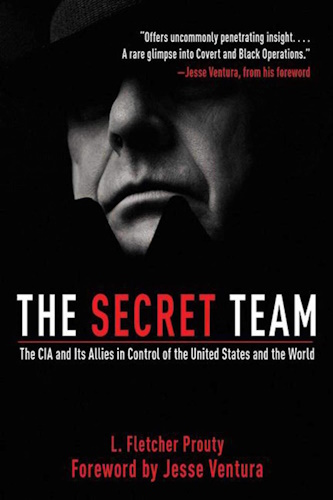
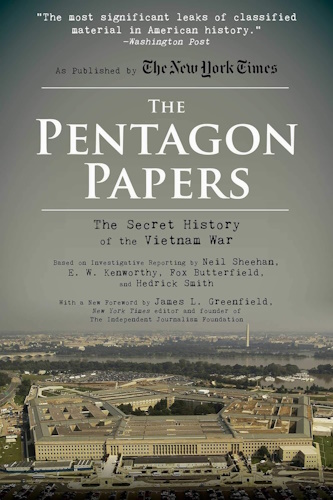

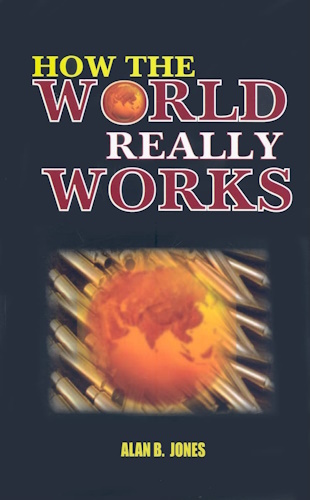

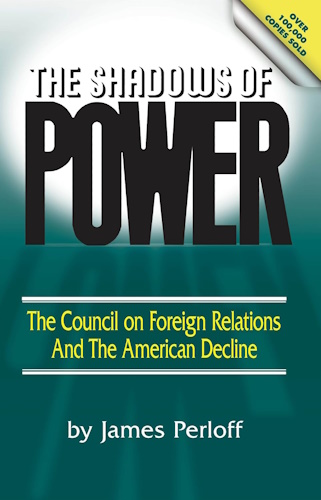

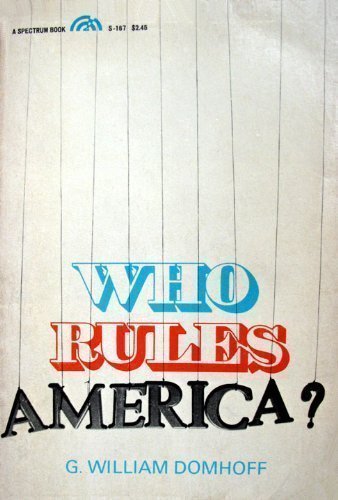

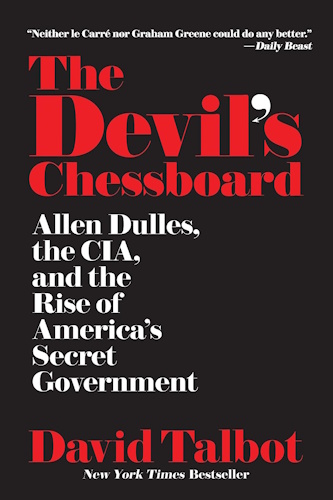
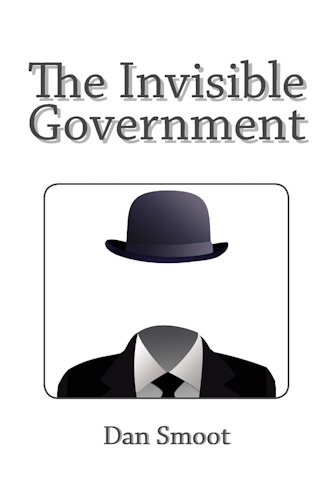

![]()
![]()
PART IV
THE CIA: SOME EXAMPLES
THROUGHOUT THE WORLD
Chapter 20
Krushchev's Challenge: The U-2 Dilemma
AS THE GLOW OF SUNRISE ILLUMINED the snowcapped peaks of the Western Himalayas, the pilot moved the throttle lever to full power and the heavily laden plane began a lazy roll down the long runway at Peshawar. The engine whined, the rate of acceleration was slow, and with each unevenness of the runway the long downward sloping wings dropped up and down, unable to come to life at that slow speed. And then, with more speed, the wings began to fly. They rose and steadied, the flopping and oscillation dampened out, and they strained to lift the heavy plane into the air. Just before the runway ran out, one last light bump, gentle as the tiptoe leap of a ballet dancer, lifted the plane into the air, and it was instantly transformed into a thing of beauty -- a graceful long winged jet.
As speed built up and wheels were retracted the plane sped through the pre dawn haze. The pilot eased the flaps up into the wings and began to climb toward the mountains. High above and to the left was the historic Khyber Pass. On course, there was a pink tinged twenty-five thousand foot peak, and further to the right was Godwen Austen, over twenty-eight thousand feet, wearing its perennial white plume. The jet was so heavy that the pilot swung it into a lazy turn inside the valley to spiral up and out, gaining altitude as he went, until he was above that famous path of the conquerors through the Khyber and nearly level with the twenty-five thousand foot mountain top. Kabul the capitol of Afghanistan, lay below; to the right, Tadzhik, the first major city inside the Soviet Union, lay ahead with Tashkent beyond. Border crossing was made at Kirovabad in a climb to sixty thousand feet. The sky was clear and dark blue -- the sky that only the small band of jet pilots know the world around. At this altitude the weather, whatever weather there was, was a remote thing, noticed only as patches of white cloud below, obscuring the ground. At cruising altitude the cockpit air system had cleared out all moisture, and the canopy was clear and brittle. Visibility was almost limitless. The pilot was a lone soul above the world, above all normal environment, under a simple, burning sun, and tuned to the even silence of the engine and the slow, mushy responsiveness of the controls in the near vacuum of the atmosphere at that height.
In the still early morning at Peshawar, the operational team had just finished flashing their message to Washington: "Puppy 68" was off and on his way to Norway via Sverdlovsk. The watch officer in the special U-2 control office in downtown Washington got that word shortly after 8:30pm on the evening of April 30. Dick Bissell, the Agency man in charge of the U-2 project, was notified immediately. Then, in short succession four other men were called. One by one they heard the same information, "Puppy 68 is away." President Eisenhower was at his favorite retreat, Camp David, with Prime Minister Macmillan of Great Britain, putting the finishing touches on plans for the summit conference. De Gaulle had just left Washington, and Macmillan and De Gaulle were scheduled to meet again in Paris on May 5. All was well with the world. The aging men who had led the world through World War II and then through the bitterness of the Cold War were preparing to culminate their long efforts in a great summit conference and then, one by one, lay down Krushchev's Challenge: the mantle of government to a new generation who would reap the benefits of peace -- hopefully true and lasting peace.
The fate of the world hung in the balance somewhere between these earnest plans for peace and the miles remaining ahead of that U-2 as it neared Sverdlovsk. This was not the normal U-2 flight. Much was made of the fact that the pilot had with him a vial (needle) of poison; so that rather than expose his native land to charges of willful violation of the air space and sovereignty of the Soviet Union, he could silence himself in death. The code of the spy. Yet little was made of the antithetical fact that the pilot also had a parachute which would save his life. Much was made of the fact, afterwards, that this was a "civilian" aircraft and that it was flown by a "civilian" pilot. Yet this pilot had been permitted to carry with him on this flight his military identification card, complete with name and picture, along with a pocketful of other identifying cards, all of which easily placed him at military installations, in military instrument flight schools, and on military facilities just days before the flight. He was hardly a deniable spy.
Much was made later of the fact that Air Force Captain Powers had resigned from the Air Force and that he was a civilian employee of the Lockheed Aircraft Corporation. He was technically a civilian: But his records were still held by the Air Force, and had he chosen, he could have returned to the Air Force without loss of pay, seniority, and promotion status.
Furthermore, the number of identification items that he had with him made it clear that he was less a true civilian and more a civilian cover spy pilot. He was in the same mold as Allen Pope in 1958, who was captured by the Indonesians, and of the Air Force crew that was shot down in Armenia also in 1958. By that time the Russians had plenty of evidence to know that "civilian" pilots belonged to the CIA by way of the U.S. Air Force.
This course of events had more impact upon the United States than upon the Soviet Union. The U.S. Government made much of the fact that the U-2 was an "unarmed civilian aircraft" and that it was flown by a civilian. However, in his book, The Craft of Intelligence, Allen Dulles makes much of the fact that operation of such sophisticated aircraft could scarcely have been kept a secret. It wasn't! As he wrote, "Sooner or later, certainly this would have leaked out." Since this was so certain, then why did the U.S. Government have to give out untrue cover stories? And why did they have to permit Powers to carry so much identification when it would have been better to limit the leak as much as possible? Even if he had died, they would have had all the information they needed. How did it happen that they broke with policy procedures for that special flight by letting him take off loaded with incriminating evidence that proved he was a U.S. spy pilot? Who was it who wanted this special U-2 flight on May 1, 1960, two weeks before the summit conference, to fail and then to become so glaring an admission of guilt when it did fail that it would inevitably doom the summit conference along with it? The incidence of these things, too many things, give weight to the thought that this flight was intended to be something rather special.
Nothing was said that all clandestine operations personnel, and especially the select coterie of U-2 pilots, were required to submit to a complete inspection before takeoff, which included the removal of all clothes and other personal effects and the issue of sanitized, non-identifiable clothing and equipment sufficient only for the flight. Neither pilot nor plane were sanitized on this flight as was required on other flights.
But these are only details that came up after the flight. The special question about this flight and this plane and this pilot was, "Who sent him out in the first place? What was this flight supposed to gain that could have been worth one particle of what it lost?" The Secretary of State, in attempting to justify the flight and as the official spokesman for his Government, said, "Conditions at a latter season would have prevented obtaining very important information. There is never a good time for a failure of an intelligence mission. We believe it unwise to lower our vigilance because of these political negotiations." Then the following three reasons for operating this flight were given:
"1) Clear skies had been forecast, which meant clear pictures.
"2) May 1 for the Russians is something like the Fourth of July for Americans. It is a national holiday that honors the solidarity of the working class. In Moscow it is the occasion for a display of armed might in a mammoth parade that winds past the Kremlin where high Soviet officials, including Krushchev, watch the troops and material go by from a reviewing stand. It was felt in Washington that the Soviet vigilance might have relaxed on May 1 because of the holiday, that perhaps radar and antiaircraft crews would be celebrating to the detriment of their defenses.
"3) The CIA had intelligence that a new Soviet rocket twice as large as anything produced by the USA would be on its launching pad for a May Day test. The launching pad, it was known, was at a new missile base near Sverdlovsk industrial complex and noted that the launch points were domed rather than following the herringbone pattern of the older Russian ground-to-air missile sites."
For some reason almost everything about this flight was different, and for some reason it had to go at precisely the time when it would cause the most alarm if it failed. A careful rereading of the objectives of this flight fails to confirm them to be of sufficient significance to override the natural precautions that should have been taken, especially since every top official in the Government knew how important the summit conference was to the President. And only high level officials - or knowledgeable ST members -- could have launched that flight. All of the regular launch authorities certainly knew that they were under strictest orders to do nothing that would jeopardize the success of the conferences.
Flights such as this one from Pakistan, Turkey, and Norway were tracked by U.S. radars and other sensitive tracking equipment. The plane did not have to maintain total silence. After all, anything the long range radars from peripheral areas could track from hundreds of miles away the Russians air defense system could track from twelve (the flight altitude) to a few hundred miles. The Soviets would know the plane was there; as we learned later, they knew of almost every flight during the previous four years. They had tracked and forced down countless U.S. aircraft in preceding years. It has been known for decades that Soviet radar is as good as or better than ours. They tracked the U-2 planes, but could not reach them at their extreme altitude. So the U-2 could communicate, not in the usual manner, but with flash, or "squirt", coded transmissions at predetermined times. In spite of the rather strange way in which the news of the loss was announced, there is no reason why we should believe that some authorities in this country did not know that it had occurred, and perhaps they knew exactly why it went down. Yet they ordered the administrator of NASA to give out an unreasonable cover story, which even said the plane had come from Turkey.
When the plane went down, its signals faded and it was lost from tracking radar. The engine had stopped, and Powers was gliding the plane down from its extreme altitude, which was so high that the air's oxygen content was insufficient to support combustion. The normal combustion of the jet engine at that altitude had to be assisted by the infusion of a trace of raw hydrogen from a small liquid hydrogen cryogenic storage bottle. If by some chance the engine either coughed itself out, or if something happened to this slight hydrogen supply and the engine flamed out, it could not be restarted at that altitude. The pilot would have had no recourse other than to let down and see if he could restart the engine at some lower altitude. The evidence that the engine would not restart even at thirty thousand feet indicates that the trouble was most likely hydrogen deficiency and not a normal fuel flameout. Had it been a simple flameout and had there been plenty of hydrogen, the engine should have restarted, as others had in similar circumstances.
When the plane did not restart, Powers was forced to let it continue to spiral toward the earth, and then at a safer altitude either bail out (a high altitude bailout is dangerous and violent) or continue on down to the ground. Actually, some of the early pictures of the U-2 showed an aircraft that was relatively undamaged, when one considers that the Russian story was that it was hit by a rocket in the air and then crashed into the ground. We may never really know whether Powers parachuted because he was hit by Russian rockets or gunfire or whether he parachuted simply to leave a plane that was doomed to crash anyhow. The elaborate pictures of the plane, which the Soviets released at the trial, show neither bullet damage nor rocket fragment damage, although at that point neither would be important; the plane was going to come down. If it had not been on the way down, neither rockets nor bullets would have been able to bring it down in those days.
Those who had been watching the progress of the flight from Washington control soon learned that the U-2 had dropped from surveillance, and they may have received coded information that gave them solid clues as to why the plane did come down. After all, space technology had reached the point by that time that ground tracking stations could tell every minute change and environmental perturbation on a remote nose cone. There was no reason why anyone should expect that the U-2 tracking system was not at least as good as that. Nose cones transit the Soviet Union all the time and are monitored all of that time. The U-2 was most likely monitored in the same manner. Therefore, it was not long before the alerted officials in Washington knew that Gary Powers was down somewhere in Russia.
In spite of this firm knowledge they instructed the CIA to say nothing. By this time the President had returned to his Gettysburg farm, and Secretary of State Herter was in Turkey, continuing his rounds of talks prior to the summit conference. As far as Eisenhower and Herter were concerned, all was well, and the conference was a short two weeks away.
In the belief and the hope that the crash had been unobserved and undiscovered by the Russians, Allen Dulles suggested that the administrator of the National Aeronautics and Space Administration, T. Keith Glennan, release a preprepared cover story. Glennan reported that a high altitude weather research aircraft on a flight from Adana, Turkey, was missing and that "it might have accidentally violated Soviet air space." At that time he added that these aircraft were special U-2 high altitude planes and that they were essential to the space program. It was believed that this frankness would take some of the heat off the flight, especially if the Russians should ever find the wreckage and report it.
This was the initiative Krushchev had been waiting for. On the fifth of May, five long days after the plane had landed, he reported that an American plane had been shot down over Russian territory. He gave no more detail than that, although he did harangue about American war-mongers, and those Americans who remembered, recalled that the Russians had shot down that innocent U.S. Air Force transport aircraft in June 1958. It began to look as though the barbaric Russians were being trigger-happy again and that they had shot down another innocent weather plane.
Those who knew the real fate of the U-2 remained silent, and those who did not went through the paces like automatons. The official spokesman of the State Department, Lincoln White, came out immediately after Krushchev's remarks and repeated Glennan's story, and again claimed innocent action on the part of the "disabled" pilot. On the same date, the U.S. Ambassador in Moscow reported that he had picked up some cocktail party gossip in Moscow that implied that the American pilot had been captured and that he was in good health. The 1958 incident was being repeated almost to the line, and hopes began to rise that this "mistake" would be no worse than the last one.
Then, on May 7 Krushchev moved in for the kill: "Comrades, I must let you in on a secret". "When I made my report I deliberately refrained from mentioning that the pilot was alive and safe and that we had the remnants of the plane. We did this deliberately, because had we given out the whole story, the Americans would have thought up another version." He then went on to give the whole story in detail. However, he stopped short of accusing Eisenhower of knowing that the flight had been ordered over the Soviet Union. It is entirely possible, in fact it is most probably the whole truth, that Eisenhower did not know that the U-2 had been dispatched on that fateful flight. Krushchev offered him an out when he said, "I am prepared to grant that the President had no knowledge of a plane being dispatched to the Soviet Union and failing to return; but that should alert us still more."
The Russian Premier was ready to say, "We are so close to the summit and to peace. I am ready to accept that this was a cruel and terrible provocation made by others without the knowledge of the American President." Let the President stand up and say that he had no knowledge of this flight, and then back up his statement by firing Allen Dulles, Dick Bissell, and those other four men who had pressed so hard for this flight. This was the challenge and that was the price. There was still a chance that Ike could have his long dreamed of summit conference; but now he would have to pay the price. Thus Eisenhower was put to the biggest test of his entire career. Could he clean house? Could he rid the country of those who, as Harry Truman said, "had diverted the CIA to become the center of foreign intrigue" or would he have to bend to their might and their cunning and see his dreams shattered in a cold and cruel awakening? Many years later it was President Richard M. Nixon who said, "When you inherit a nightmare . . . " -- and that was as far as he went with his thought. President Kennedy after the Bay of Pigs had the same nightmare. President Eisenhower had come within two weeks of achieving not only the goal of an aging President who had given his entire adult life to his country; but of realizing the hope of the entire country for a lasting and hopeful peace.
No one will ever know just why he turned down Krushchev's gambit. No one will ever know why he decided to back the ST at a time when it had permitted his plans to be shattered. Did he simply believe that his course was the only honest way out and that someone in his Administration had made an innocent mistake; or did he succumb to a greater pressure?
It was not only the U-2 that had trapped him. The ST had armed and equipped a major force of tens of thousands of Tibetans high beyond the Himalayas; it had thousands of Cubans under arms and in training all over the North American continent, from the Canal Zone to many sites in the United States it was deeply entwined in the politics and economy and rebellions of Africa; and already the United States, which had seldom seen armies in its own streets, was becoming accustomed to the roar of heavy trucks and the march of feet in embattled inner cities. Did Eisenhower really have a choice? Could he just fire Allen Dulles and a few of his top lieutenants and clean house that simply? He knew that he could not. Those other men who had seen to it that all the little things fell into place and that the U-2 had gone aloft on that precise day were men of the ST, and wiping out Dulles and his staff would not touch them. Furthermore, it was one thing to have the power to see that the U-2 was not stopped from going on a rather routine flight; but it was an entirely different matter to be able to assure that it would come down in the very center and heart of the Soviet Union.
The men responsible for this flight were highly competent and they knew, for instance, that if the all important hydrogen bottle was only partly filled they could count upon the plane's corning down as certainly as if they had only partly filled its tanks with fuel. But fueling was a routine chore done by men who always know the plane must be full; and a pilot knows that he must check the tanks and the caps. Also, on the U-2 you can just about tell how full it is by seeing how much the heavily loaded wings droop when the plane is on the ground. Hydrogen starvation was much more subtle.
As Ike pondered his dilemma it no doubt flashed through his mind how all of these pieces began to fit together. He had heard a little about the training of Cuban exiles. He had heard something of the Tibetan flights and of the training of Tibetans in the United States for deep paradrop missions into far northwest China. He knew of the troubles in Africa, and he knew how inner city problems were welling up in the United States. But he had put all this aside as small matters in comparison to the importance of his great crusade for peace. It is quite evident that these thoughts preyed upon his mind. On May 9 he authorized Secretary Herter to say, "In accordance with the National Security Act of 1947 the President has put into effect since the beginning of his Administration directives to gather by every possible means information required to protect the United States and the Free World against surprise attack and to enable them to make effective preparations for their defense. Under these directives, programs have been developed and put into operation which have included extensive aerial surveillance by unarmed civilian aircraft, normally of a peripheral character, but occasionally by penetration."
To underscore what the Secretary had said and to confirm what had been on his mind, the President himself said: "As the Secretary of State pointed out in his recent statement, ever since the beginning of my Administration I have issued directives to gather, in every feasible way, the information required to protect the United States and the Free World against surprise attack and to enable them to make effective preparations for defense." He was putting together in his own mind all of the bits and pieces of the big puzzle. He had been trapped by his own ST, and all of the things they had been doing now made a pattern.
The United States and the world were not going to have peace; they were going to enter a generation or perhaps even more of numbing cold war in which the inputs of random secret intelligence would provide evidence of subversion throughout all the countries of the free world and the United States would react by attacking subversive insurgency wherever it was discovered.
Now Eisenhower could see what his old comrade in arms, Maxwell Taylor, had meant by his new "National Military Plan Of Flexible Response." There is much more meaning in those words than anyone would suspect at first reading. It would have been enough for Maxwell Taylor to suggest a new national military plan; but this was not the idea. He meant that from now on the country would be mobilized in an increasing frenzy to the tune of another trumpet, which called for a military plan of flexible response to Secret Intelligence alarms and cries of subversive (Communist) insurgency.
All of these things took on a new meaning and a totally new warning. The President may have realized that he was not really in charge of events, and he could not honestly say that he didn't know what was going on; yet he had never seen the picture in its totality before. There was no other way out. President Eisenhower did the only thing he could. He announced to the world that he had known about the flight and that it had been his sole responsibility as Commander in Chief of the United States.
With that, Krushchev had no choice but to face the same facts, his way. How could he hope to reach a peaceful settlement and meaningful agreements with a President who was admitting to the world that at the very time he had been speaking peace he had been plotting overflights and the invasion of the territorial integrity of not only the Soviet Union, but of China and Tibet and Cuba. Krushchev had no alternative either. All hope for a successful summit conference had gone. The leaders of the world attended the conference individually but all was lost. With this great disaster the fifteen year search for a peaceful settlement in a world menaced by the atomic bomb came to an end. Vietnam lay ahead.












-
Urantia Book, 44:0.11 - The Celestial Artisans
Never in your long ascendancy will you lose the power to recognize your associates of former existences. Always, as you ascend inward in the scale of life, will you retain the ability to recognize and fraternize with the fellow beings of your previous and lower levels of experience. Each new translation or resurrection will add one more group of spirit beings to your vision range without in the least depriving you of the ability to recognize your friends and fellows of former estates.
-
Princess Bride 1987 Wallace Shawn (Vizzini) and Mandy Patinkin (Inigo Montoya)
Vizzini: HE DIDN'T FALL? INCONCEIVABLE.
Inigo Montoya: You keep using that word. I do not think it means what you think it means. -
Urantia Book, 117:4.14 - The Finite God
And here is mystery: The more closely man approaches God through love, the greater the reality -- actuality -- of that man. The more man withdraws from God, the more nearly he approaches nonreality -- cessation of existence. When man consecrates his will to the doing of the Father's will, when man gives God all that he has, then does God make that man more than he is.
-
Urantia Book, 167:7.4 - The Talk About Angels
"And do you not remember that I said to you once before that, if you had your spiritual eyes anointed, you would then see the heavens opened and behold the angels of God ascending and descending? It is by the ministry of the angels that one world may be kept in touch with other worlds, for have I not repeatedly told you that I have other sheep not of this fold?"
-
Urantia Book, Foreword - 0:12.12 - The Trinities
But we know that there dwells within the human mind a fragment of God, and that there sojourns with the human soul the Spirit of Truth; and we further know that these spirit forces conspire to enable material man to grasp the reality of spiritual values and to comprehend the philosophy of universe meanings. But even more certainly we know that these spirits of the Divine Presence are able to assist man in the spiritual appropriation of all truth contributory to the enhancement of the ever-progressing reality of personal religious experience—God-consciousness.
-
Urantia Book, 1:4.3 - The Mystery Of God
When you are through down here, when your course has been run in temporary form on earth, when your trial trip in the flesh is finished, when the dust that composes the mortal tabernacle "returns to the earth whence it came"; then, it is revealed, the indwelling "Spirit shall return to God who gave it." There sojourns within each moral being of this planet a fragment of God, a part and parcel of divinity. It is not yet yours by right of possession, but it is designedly intended to be one with you if you survive the mortal existence.
-
Urantia Book, 1:4.1 - The Mystery Of God
And the greatest of all the unfathomable mysteries of God is the phenomenon of the divine indwelling of mortal minds. The manner in which the Universal Father sojourns with the creatures of time is the most profound of all universe mysteries; the divine presence in the mind of man is the mystery of mysteries.
-
Urantia Book, 1:4.6 - The Mystery Of God
To every spirit being and to every mortal creature in every sphere and on every world of the universe of universes, the Universal Father reveals all of his gracious and divine self that can be discerned or comprehended by such spirit beings and by such mortal creatures. God is no respecter of persons, either spiritual or material. The divine presence which any child of the universe enjoys at any given moment is limited only by the capacity of such a creature to receive and to discern the spirit actualities of the supermaterial world.
-
Urantia Book, 11:0.1 - The Eternal Isle Of Paradise
Paradise is the eternal center of the universe of universes and the abiding place of the Universal Father, the Eternal Son, the Infinite Spirit, and their divine co-ordinates and associates. This central Isle is the most gigantic organized body of cosmic reality in all the master universe. Paradise is a material sphere as well as a spiritual abode. All of the intelligent creation of the Universal Father is domiciled on material abodes; hence must the absolute controlling center also be material, literal. And again it should be reiterated that spirit things and spiritual beings are real.
-
Urantia Book, 50:6.4 - Planetary Culture
Culture presupposes quality of mind; culture cannot be enhanced unless mind is elevated. Superior intellect will seek a noble culture and find some way to attain such a goal. Inferior minds will spurn the highest culture even when presented to them ready-made.
-
Urantia Book, 54:1.6 - True And False Liberty
True liberty is the associate of genuine self-respect; false liberty is the consort of self-admiration. True liberty is the fruit of self-control; false liberty, the assumption of self-assertion. Self-control leads to altruistic service; self-admiration tends towards the exploitation of others for the selfish aggrandizement of such a mistaken individual as is willing to sacrifice righteous attainment for the sake of possessing unjust power over his fellow beings.
-
Urantia Book, 54:1.9 - True And False Liberty
How dare the self-willed creature encroach upon the rights of his fellows in the name of personal liberty when the Supreme Rulers of the universe stand back in merciful respect for these prerogatives of will and potentials of personality! No being, in the exercise of his supposed personal liberty, has a right to deprive any other being of those privileges of existence conferred by the Creators and duly respected by all their loyal associates, subordinates, and subjects.
-
Urantia Book, 54:1.8 - True And False Liberty
There is no error greater than that species of self-deception which leads intelligent beings to crave the exercise of power over other beings for the purpose of depriving these persons of their natural liberties. The golden rule of human fairness cries out against all such fraud, unfairness, selfishness, and unrighteousness.



